Musei Tokugawa
出生 : 1894-04-12, Masuda, Shimane Prefecture, Japan
死亡 : 1971-08-01
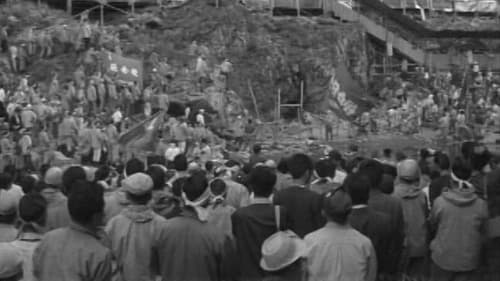
Narrator
A chronicle of the eight-year battle against the construction of the Matsubara dam at Ogunimachi Shimouke, Asogun, district of Kumamoto. Tomoyuki Murahara constructs the “beehive fortress,” the point of reference for the protest movement opposing the decision to expropriate land.

三上於菟吉の同名時代小説を、伊藤大輔と衣笠貞之助が脚色、和田夏十がシナリオ化し、市川崑がメガホンをとった。1935年版に主演した長谷川一夫が、再び中村雪之丞と闇太郎の二役を演じた。その他、山本富士子や若尾文子、市川雷蔵、勝新太郎など豪華な出演者が顔をそろえた。長谷川一夫300本記念作品。
江戸で興行を張る上方歌舞伎の女形役者・中村雪之丞は、父を冤罪で陥れ自死に至らしめた土部三斎と広海屋の姿を認めた。三斎の娘の浪路は雪之丞に恋をし、雪之丞は彼女を利用して父の仇を討とうとする。江戸の飢饉に乗じて米を買い占めていた川口屋は、雪之丞にそそのかされた広海屋に邪魔され破産、広海屋に放火した。怒った広海屋は川口屋を絞め殺すが、誘拐しようとした浪路に刺されてしまう。

Also Known As: Otogi's Voyage Around the World

The mythical adventures of the legendary Chinese trickster Monkey, who must outwit a variety of wily demons who stand in the way of him and his fellow Buddhist travelers. Though portrayed as a literal, if rather anthropomorphized, monkey in the original legends, this film substitutes the spindly comic actor Norihei Miki, sans makeup.
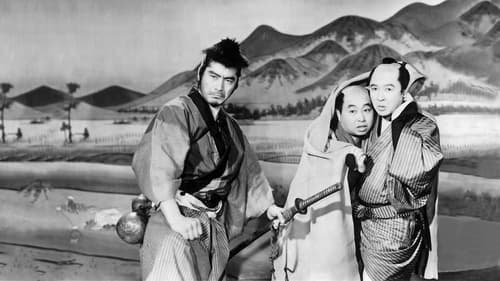
Ikku Jippensha
加東大介と小林桂樹が弥次喜多コンビをユーモラスに演じた喜劇。作品のネタに困った十返舎一九は、栃面屋弥次郎兵衛と喜多利屋喜多八に金を与え二人に旅をさせる。だが二人をつけねらう謎の美男子に旅を邪魔され、弥次さん喜多さんは面白くない。実はこの男、偽小判事件にからみ姿を消した十兵衛の行方を追う幕府の隠密で、一緒に出発した十兵衛の娘お雪とはぐれてしまっていた。旅先で数々の失敗を繰り返す弥次喜多コンビだったが、二人の行動が偽小判事件を解決に導くことになり…。

The fourth entry in the Company President Series

Lavish Japanese-Chinese coproduction based on an ancient Chinese legend about a man who falls in love with a snake goddess in human form.

A little girl who falls into a lake and is saved by a god who then takes her up to the clouds and shows her what the world was like before she was born and what the world would be like if she where never born. While in the clouds she meets her grandparents and a few other people she loved who have passed on.

Japanese comedy film.

film directed by Tai Katô

Jirôemon Naitô
Jidai-geki by Nobuo Nakagawa. Most likely a star vehicle for Kanjuro Arashi

A bar girl tries to pass her three children, each from a different father, to rural relatives.

An Ishiro Honda short film.

Narrator
Tobisuke, puppeteer in Kyôtô, saves O-fuku's life. Wounded in the head, it can now count to three. O-fuku invited him to meet her mother so she can heals him with a golden fruit. But O-fuku and Tobisuke had to cross the valley of death filled with fantastic creatures, will they survive?

Japanese adaptation of Marcel Pagnol's play "Marius", set in early XXth century Japan.

Dr. Senuma
Horror film directed by Kôzô Saeki.
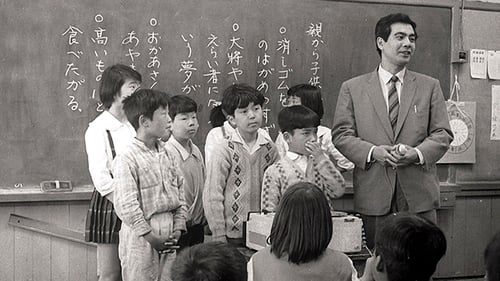
A small-town boy with a learning disability attempts to fit in with his classmates.

Baifû Shumpûtei
This film focuses on Koreans living in Japan. The filmmaker’s humanism comes across in the portrayal of a girl living in a shabby tenement, the warmth of a Korean girl she meets, and the friendliness of this Korean girl’s family.

1944 war movie
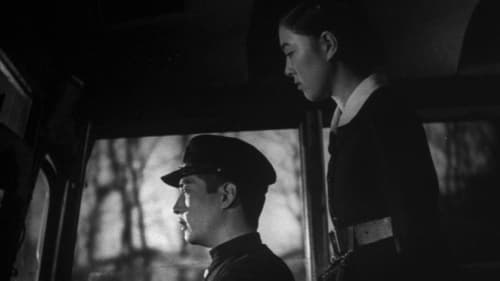
(voice)
A wealthy family will not allow the military to grow crops on their fields due to their superstitious beliefs about their son's illness.

Ichibei
This epic depicts the battle between Uesugi Kenshin and Takeda Shingen. The focus of the story is the struggle by the unit leader in charge of the main supply wagons and the supply troops to transport materiel to the Uesugi army. To this are added episodes involving an itinerant woman.

Feature film.

(Japanese version)
The story was liberally adapted from a short sequence in the popular Chinese folk tale Journey to the West. Princess Iron Fan is a main character. Specifically, the film focused on the duel between the Monkey King and a vengeful princess, whose fan is desperately needed to quench the flames that surround a peasant village.

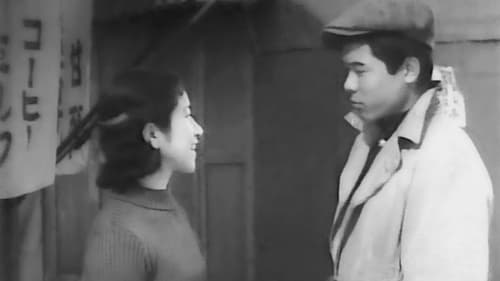
Ishimura
The Whole Family Works, Mikio Naruse's adaptation of a Sunao Tokunaga novel, feels more of a piece with the writer/director's quietly observant and psychologically charged later work. For the Naruse-familiar, it is an anomaly only in its placement within his filmography—indeed, this could be a film made by the elder, stasis-minded Naruse momentarily inhabiting, through a metaphysical twist of fate, his stylistically exuberant younger self. Set in depression-era Japan around the time of the Sino-Japanese War (which the director evokes, during a brief dream sequence, by dissolving between children's war games and actual adult warfare), The Whole Family Works gently observes a family coming apart at the seams. Ishimura (Musei Tokugawa) is the jobless father of nine children.

Mito Komon
This is the only surviving “Mito Komon Manyu-ki” film. This release also known as "Adrift Tour Memoir" or literally "Mito Komon's Pleasure Trip" is an 80-minute compilation of the first (東海道の巻 or "Tokaido no maki") and second (日本晴れの巻 or "Japan's Fine Weather Reel") parts (147 minutes), which were re-edited and screened at a time when presentable films were dried up immediately after the defeat of the war.
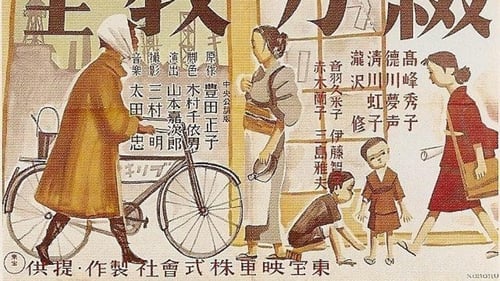
Father
Based on an autobiographical story by Toyota Masako.

Narrator
Propaganda documentary about the fall of Nanking. Considered for a long time as a lost film, it was discovered in Beijing, China, in the year 1995.

Hikoroku Laughs a lot

Meitei
1936 P.C.L. adaptation of Natsume's novel.

The first in a series of films featuring the comedy duo Entatsu-Achako, providing them with a background story to do their popular manzai-routines on film. Here, Entatsu and Achako start out as rivals for the affection of a young woman but ultimately pair up to face a bigger rival. Entatsu chooses to become a boxer to get his chance at punching the rival out of the way.

Principal Tanuki
1935 P.C.L. adaptation of Natsume's novel.

The film generally regarded as Japan’s first true musical was also the first film made entirely in-house by the pioneering studio P.C.L., a company founded specifically to take advantage of emergent sound technology. P.C.L. worked in collaboration with a brewer’s firm, Dai Nihon Biru, who met the production costs of the film in full, and whose products are featured in the film in an example of the sophisticated and modern merchandising typical of the studio’s early work. The film is partially set in a beer hall, and its story concerns a beer seller at a train station and her relationship with a music student trying to create a hit song. Director Sotoji Kimura was to become a company stalwart, making such films as Ino and Mon, while actress Sachiko Chiba would emerge the studio’s first real star, appearing in such films as Wife Be Like a Rose.

An early Japanese sound film, notable for being the only Japanese film ever to use the Western Electric Sound System. Contrary to most Western sources that give sole directing credit to Eizo Tanaka, it was actually co-directed by six different directors, Tanaka, Kazue Kimura, Kazuo Takimura, Ryoji Mikami and Hidekuni Ouchi.

Hikozaemon Okubo
Tsukitaro, a young man who comes to Edo, meets a blind girl named Ochiyo. Ochiyo 's father, the grinder Yasujiro, was asked to sharpen a sword called Kongomaru, which was planned to be presented to the shogun Iemitsu, but he died due to a yakuza attack. In addition, the sword was stolen, and Ochiyo 's sister was also kidnapped... A humorous historical drama directed by Eiichi Kudo, starring Hibari Misora and Kotaro Satomi. Hibari Misora plays a male princess and shows off her charming appearance with stylish songs and dances.

















